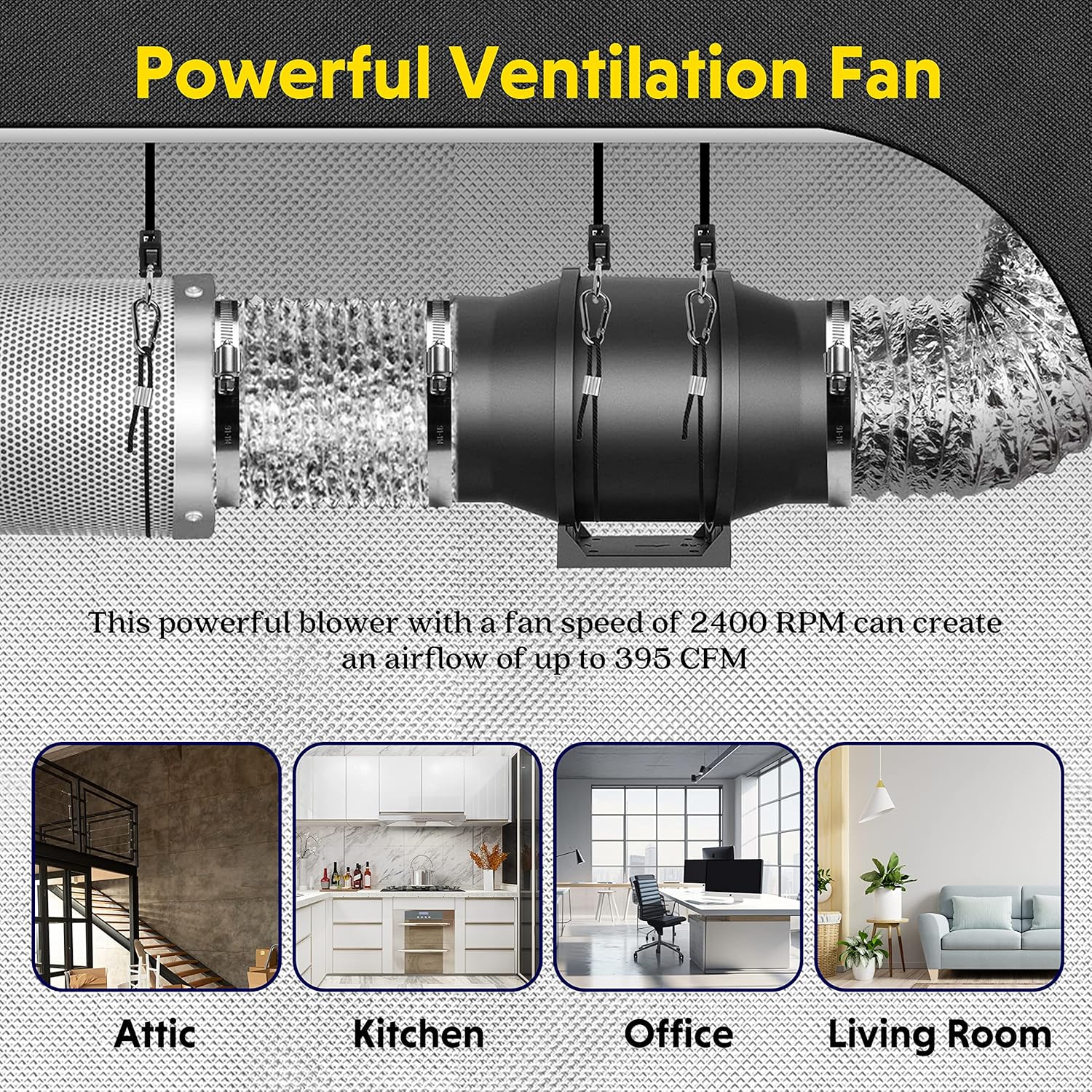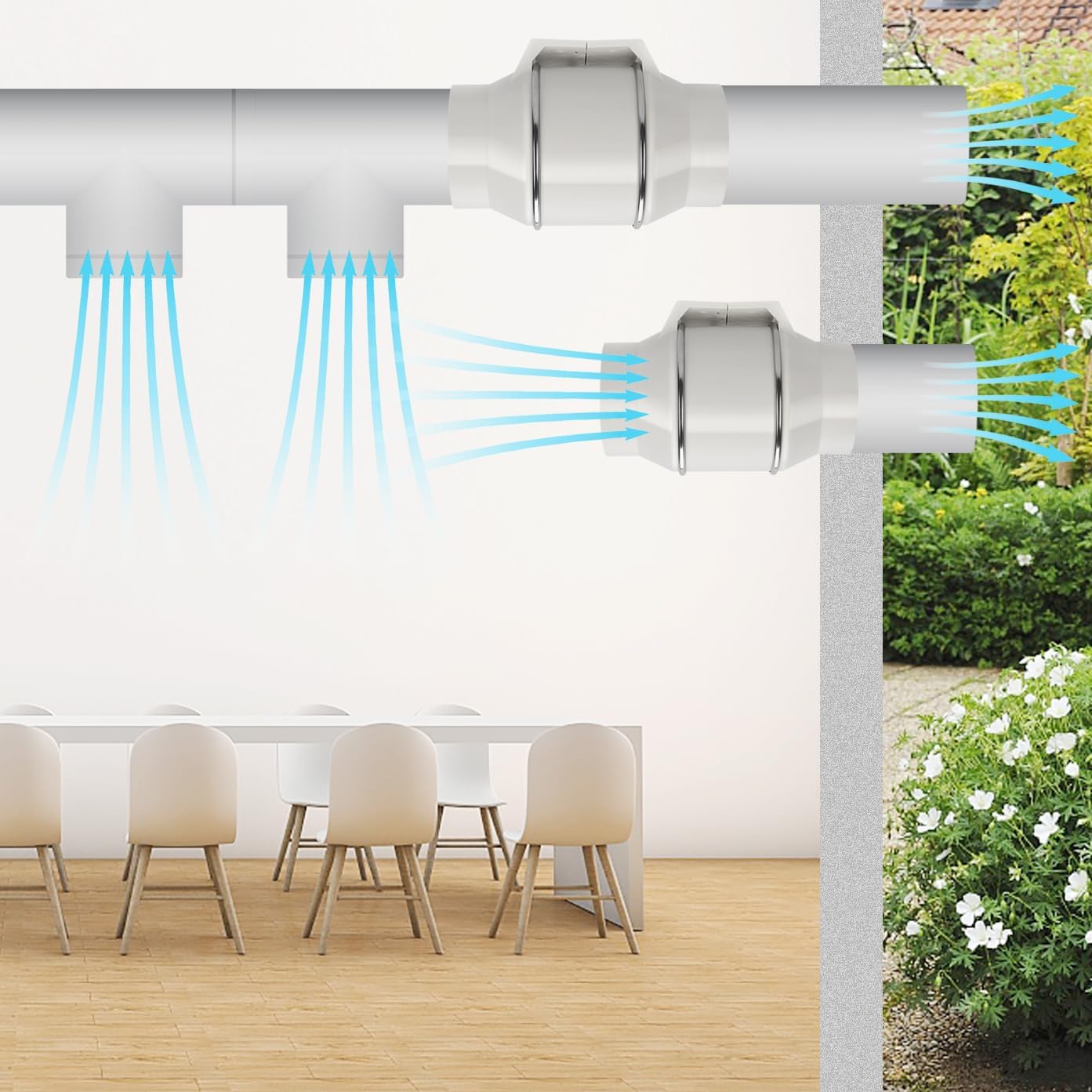The search for a comfortable and healthy indoor environment often leads to solutions to air quality, and the key player among them is the silent inline fan fan. Unlike their predecessors, modern ventilation technology prioritizes not only efficiency but also acoustics, which makes a dream of achieving a powerful yet unobtrusive system a reality. Choosing the right fan means balancing the airflow needs with the desire for peace and tranquility, a challenge that is increasingly capable of meeting.
Understand the inline piping fan capabilities

Essentially, the inline duct fan is designed to be installed directly in the ducts of the ventilation system. Its main function is to increase airflow, help move air from one area to another, exhaust stale or supply fresh air. These fans are different from ceiling or wall-mounted exhaust fans because they are seamlessly integrated into existing ducts, providing a more powerful, often more targeted approach to air movement, whether for residential, commercial or professional applications, such as planting tents.
The evolution of quiet: Silent inline tube fans with traditional models
It is predictable that the most important difference is set up with a silent inline tube fan whose traditional noise level is its traditional noise level. While older fans often produce striking, even distracting buzz or howling, modern silent models utilize advanced motion technology, aerodynamic-optimized blades, and sloping fences. For example, a high-quality white finish can not only enhance the aesthetic, but it can also be part of the design, including an external protective case to reduce sound vibrations. This focus minimizes noise and makes them ideal for noise-sensitive environments such as bedrooms, offices and libraries, where a quiet fan experience is crucial. While sometimes powerful, traditional fans often sacrifice the quietness of air flow, new technologies no longer require this trade-off.
Balanced Force and Peace: High CFM Fan Fan Dilemma
When considering ventilation, the volume of air flow measured in cubic feet per minute (CFM) is a key factor. High CFM fan fans are required for larger spaces or areas where a large amount of air exchange is required (such as kitchens, workshops, or commercial environments). Historically, the challenge has been that higher CFM often means higher noise. However, contemporary engineering has made great progress. Today, a high CFM tube fan can be found, which also incorporates noise reduction. This is achieved through better motion design, blade geometry that moves more air with less turbulence and insulated shells. The key is the comparison of specifications; some fans are clearly designed for high airflow without the typical roar, providing a powerful inline fan-shaped solution for ventilation that respects acoustic comfort.
Zoom-tailored: Small inline fan solution
Not every application requires large-scale air flow. For smaller rooms, specific spots are ventilated or integrated into compact systems such as growth tents, a small inline fan is usually a more suitable and more efficient option. These units are designed for lower CFM ranges, but still provide excellent performance and importantly quiet operation. Due to its reduced footprint, a small inline fan fan is often excellent in careful installation. The comparison here is less than the original force, but more about the applicability of purpose. While larger fans can be too large in a tight space and can be noisy, the compact model can provide the necessary airflow without dominating the soundscape, truly embodying the principle of a quiet tube fan.
Scale quietly: The rise of effective commercial fan fans
Instead, commercial fan fans are carefully designed to perform robust, continuous operations in demanding environments such as offices, repositories, cafeterias or large workshops. Historically, noise is often a secondary issue of durability and power in these environments. However, the well-being of employees and the comfort of customers make acoustics at the forefront. Nowadays, modern commercial duct fans often incorporate noise reduction technology even in large capacity models. The comparison with smaller fans lies in the engineering challenges of pure scale and quietly moving a lot of air. While a small inline fan benefits from inherently lower power, high-performance commercial units must actively reduce noise through complex designs and materials, ensuring that even powerful systems can operate without excessive interference.
Under the hood: Inline blower design and acoustics
The term "inner blower fan" generally refers to a centrifugal fan designed for inline conduit installation. These fans usually use wheels with many small blades to suck air in and drive it out at a 90-degree angle (although the inline version maintains the direction of the airflow). The blower usually produces greater pressure than an axial fan (air parallel to the axis), making it suitable for systems with higher resistance, such as long pipes or systems with multiple filters. Auditically, the design of the inline blower may vary. Due to the design and housing of its impeller, some people are inherently quieter, while others may prioritize stress over silence. When choosing any silent inline tube fan, it is crucial to go beyond the general type and check for specific noise levels (such as SONES or DBA), as well as features such as motor insulation or aerodynamic sleeves that help quieter operation.
Find your perfect match: Key things to note about quiet fans
Choosing an ideal quiet fan involves not only choosing a fan with the lowest decibel rating. It's about matching the functionality of the fan to the specific needs of the space. Consider the size of the area, the length and complexity of the pipes, and the main purpose of ventilation - odor control in the kitchen, reduced humidity in the bathroom or air purification in the growth tent. As some modern fans show, a cutting-edge aerodynamic structure ensures optimal airflow distribution and can promote efficiency and reduce noise. Look for models with variable speed control, as running the fan at a lower speed when maximum airflow is not required will greatly reduce noise. Energy efficiency is another important factor, as the constantly running fan should do so without causing peak electricity bills. The ultimate goal is an inline conduit fan that provides fresh, clean air without hearing its presence.
Conclusion: Embrace the quiet efficiency in air management
In short, the evolution of the inline housekeeper has brought us into an era in which strength and silence can coexist. Whether you need a high CFM fan fan for larger commercial space or a small inline fan fan for a comfortable room, there are options designed to minimize noise. From basic inline air-oriented ventilation fan units to complex inline blower systems, the emphasis on quiet operation is a growing trend. By carefully comparing features, understanding specific airflow and acoustic requirements, and taking into account factors such as aerodynamic design and motion technology, you can invest in silent inline tube fans that enhance the air quality of the environment without disrupting its tranquility. This commitment to quality ensures a fresher, cleaner and a quieter interior atmosphere.





